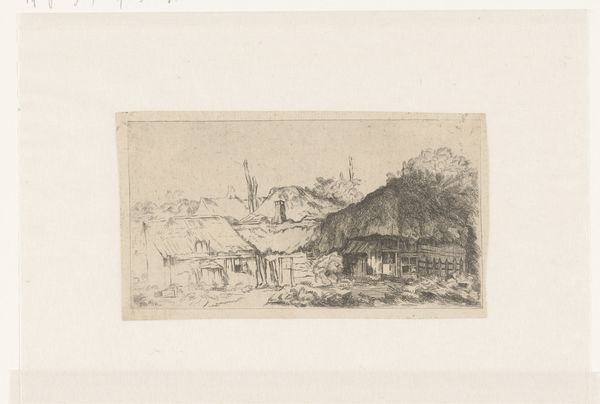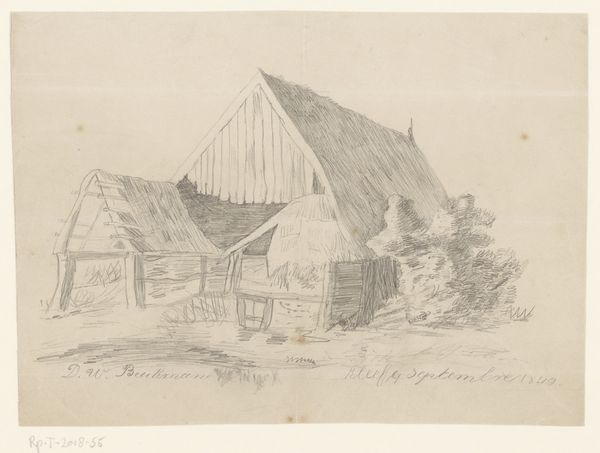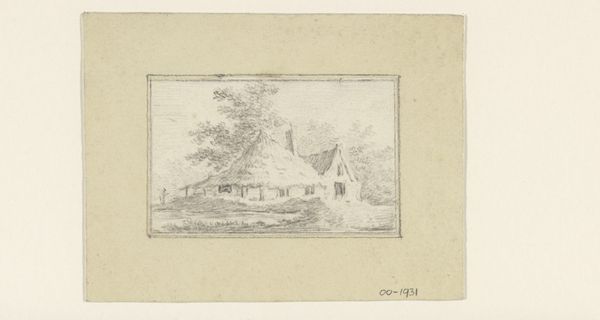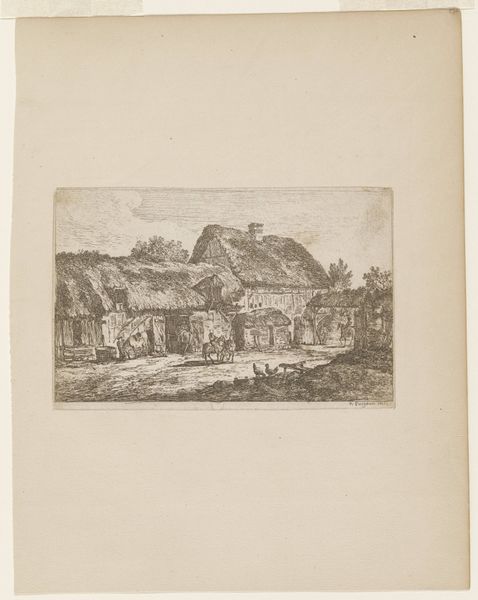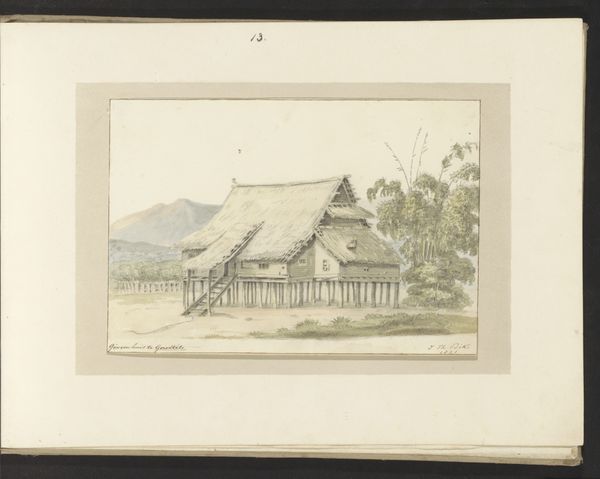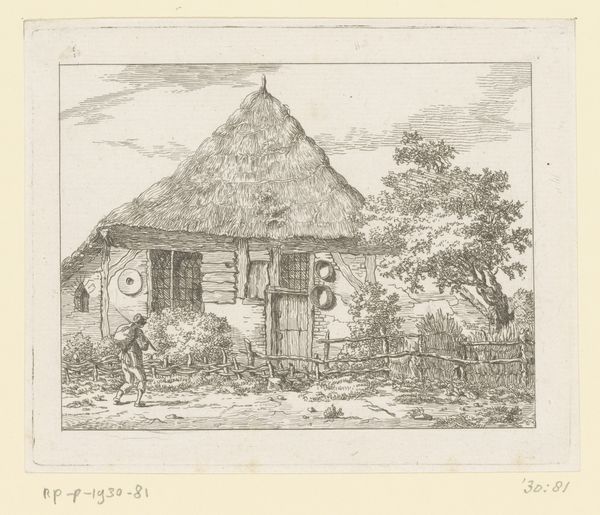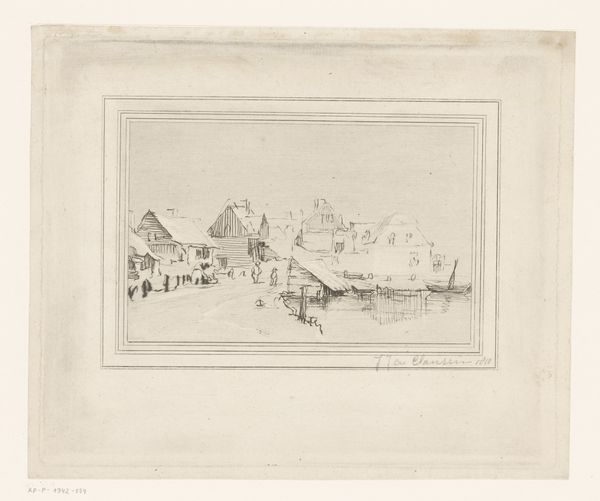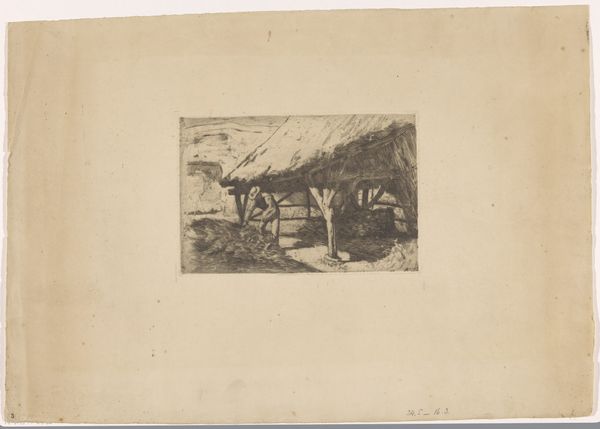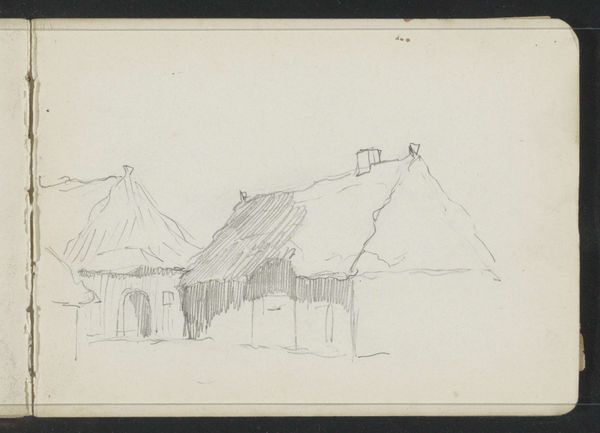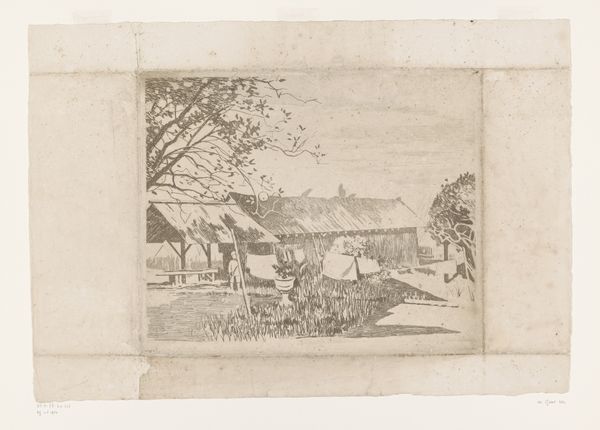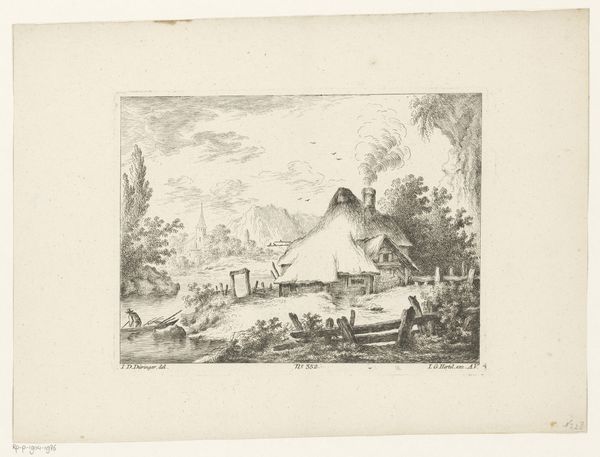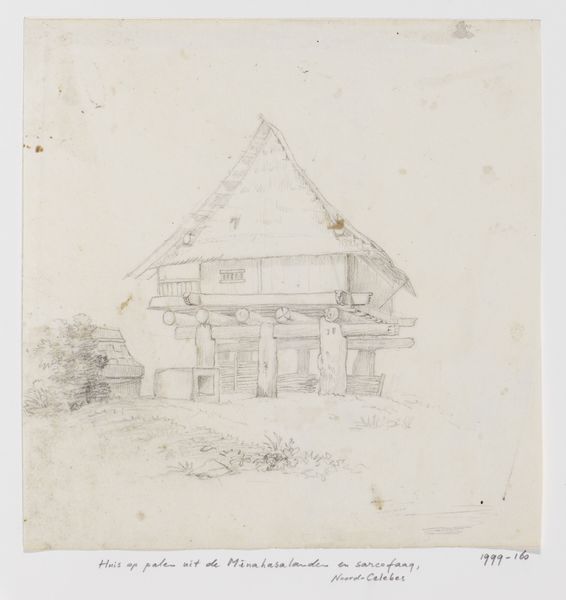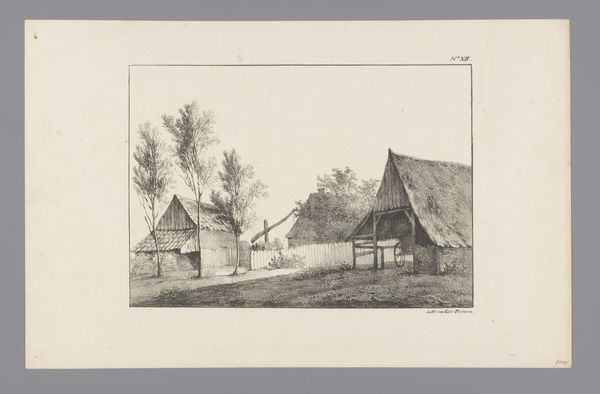
drawing, pencil
#
drawing
#
neoclacissism
#
landscape
#
pencil
#
genre-painting
Dimensions: height 164 mm, width 215 mm
Copyright: Rijks Museum: Open Domain
Curator: Looking at this drawing, it feels strangely comforting, like a memory fading at the edges. Editor: Yes, there’s a dreamlike quality to it, I agree. This is a pencil drawing called "Boerderij," which translates to "Farmhouse," created by R.C. Schöneckern in 1783. Curator: The building dominates the composition. It gives off strong 'hearth and home' vibes. Though it appears relatively modest, even worn. Editor: Absolutely. During that period, images of rural life often served to romanticize the virtues of simpler times. Even the placement of a distant church steeple adds a layer of societal structure to what initially seems an unassuming image. It's invoking values. Curator: True. What is interesting to me is how the texture and form of the thatched roof become abstracted, conveying transience— a nod to the fact that 'nothing gold can stay', particularly relevant during a period defined by dramatic social upheaval, such as the unrest that ultimately ushered in the French revolution a few years later. Is it a stable base of values, or a sentimental projection onto the peasantry? Editor: Precisely. And the genre-painting style situates it within a broader trend. Rural themes often reinforced particular social orders, though the relative lack of narrative in this drawing— absence of human figures or bustling activity— offers room for multiple interpretations. It's up to each viewer to project onto it, even today. Curator: And for me that hints at continuity of feeling. A symbol, though idealized, retains meaning because the feeling persists despite cultural change. Editor: Yes, despite its historical context, "Boerderij" speaks to something universally familiar. A longing, maybe. Curator: A good observation— thank you! This brief immersion highlighted something that persists across the ages. Editor: It has been a genuine pleasure – a good image well-scrutinized helps ground and focus historical interpretation.
Comments
No comments
Be the first to comment and join the conversation on the ultimate creative platform.
